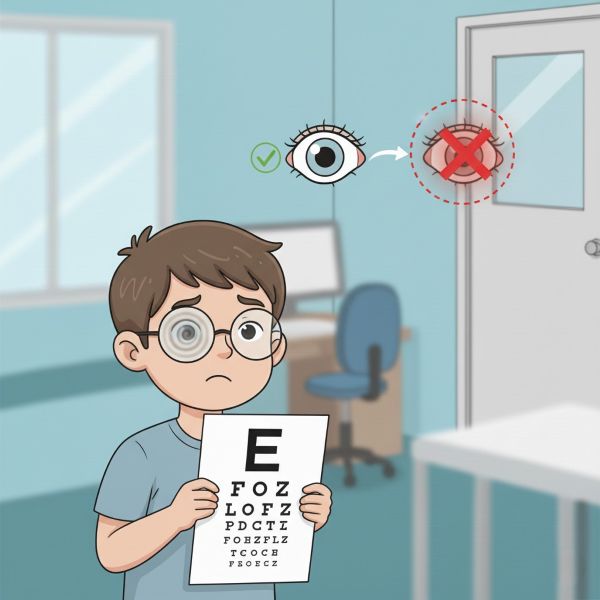Amblyopia
Definition and Pathophysiology
Amblyopia, commonly known as "lazy eye," refers to poor visual acuity in one or, rarely, both eyes that is not correctable by glasses or contact lenses and for which there is no other identifiable eye disease. It is a disorder of neurodevelopment where the brain fails to process inputs from one eye and, over time, favors the other eye. This results from the failure of the eye to establish a normal cortical representation of visual input during the critical period of visual maturation (typically between birth and seven years of age).

Strabismus, or misalignment of the eyes, is a common cause of amblyopia, as the brain learns to ignore the input from the misaligned eye.
Causes and Clinical Findings
The main causes of amblyopia are conditions that interfere with clear vision in early childhood:
- Strabismus: Misalignment of the eyes, where one eye may turn in, out, up, or down.
- Refractive Error: A large or unequal degree of refractive error (nearsightedness, farsightedness, or astigmatism) between the eyes.
- Stimulus Deprivation: Any condition that obstructs vision, such as a congenital cataract or a droopy eyelid (ptosis).
Amblyopic eyes may demonstrate a relative afferent pupillary defect and sometimes a subtle, latent nystagmus. The condition may not become apparent until adulthood when a person suddenly becomes aware of their poor unilateral vision. The finding of a latent strabismus (heterophoria) can be a clue that the visual loss is long-standing.
Other Uses of the Term
The word amblyopia has also been used in other contexts. For example, the bilateral central or centrocecal scotomas seen in chronic alcoholics have often been referred to as "tobacco-alcohol amblyopia," although "nutritional optic neuropathy" is now considered a more accurate term.
Cross References
Esotropia; Heterophoria; Nystagmus; Relative afferent pupillary defect (RAPD); Scotoma

